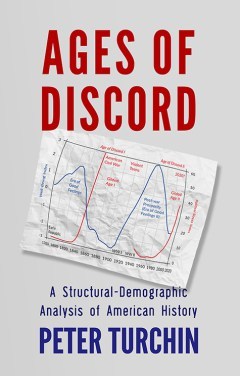
We are on the wrong track
Seventy percent of Americans (and counting) think so. The inflation-adjusted wage of a US worker today is less than 40 years ago—but there are four times as many multimillionaires. As inequality grows, the infrastructure frays and the politics become more poisonous. Every year, more and more Americans go on shooting sprees, killing strangers and passers-by—and now, increasingly, the representatives of the state.
Historical analysis shows that long spells of equitable prosperity and internal peace are succeeded by protracted periods of inequity, increasing misery, and political instability. These crisis periods—“Ages of Discord”—tend to share characteristic features, identifiable in many societies throughout history. Modern Americans, for example, may be disconcerted to learn that the US right now has much in common with the Antebellum 1850s and, even more surprisingly, with ancien régime France on the eve of the French Revolution. Can it really be true that our troubled age is nothing new, and that it arises periodically for similar underlying reasons? It can. Ages of Discord marshals a cohesive theory and detailed historical data to show that this is, indeed, the case. The book takes the reader on a roller-coaster ride through American history, from the Era of Good Feelings of the 1820s to our first Age of Discord, which culminated in the American Civil War, to post-WW2 prosperity and, finally, to our present, second Age of Discord.
Unlike societies in the past, however, we are in a unique position to take steps to escape the worst. Societal breakdown and the ensuing wave of violence can be avoided by taking collective, cooperative action. The structural-demographic theory, explained in this book, helps us understand why demographic, social, and political trends changed direction from favorable to unfavorable in America around the 1970s. Such understanding is the key to developing reforms that would reverse these negative trends and move us to a more equitable, prosperous, and peaceful society. — Book promo @ goodreads.com
Only one quote:
Growing distrust in state institutions is particularly worrying because it can combine with exploding public debt in unpredictable ways. So far, the United States has enjoyed a very low cost of servicing its public debt. However, given a very shallow level of generalized trust in state institutions, there is a real danger that investors in the US debt may suddenly lose confidence in the specific institution: in the willingness and ability of the US government to pay on its obligations. Political polarization and intraelite conflict (themselves a result of elite overproduction and internal competition), which contributed to such policy failures as the 2013 government shutdown, are putting additional stresses on the social system. Sudden collapse of the state’s finances has been one of the common triggers releasing pent-up social pressures toward political instability…

A good article posted by Gaius Baltar on Larry Johnsons’s blog, A Son Of The New American Revolution. I have quoted his closing paragraph.
By putting its societies on an ideological footing the western elite has backed itself into a corner. They can’t compete; they can’t develop their economies or societies; and they can’t go back. Fixing the problems of the West will require an economic revival, where a real economy will replace the current fake financialized service economy. This cannot be done without putting the hated 1.5/8 group into positions of power. Therefore, it will not be done as long as the current western ruling class is in power. Western societies will not survive an economic revival in their current ideological configuration. Conflict is therefore the only remaining option for the ruling class to hang on to power.

A hellacious thunderstorm yesterday afternoon. It built up within and hour and then started with marble size hail for a couple minutes until the ground was almost white. Then dumped a lot of rain for about 10 minutes and moved on. The Reserve Weather Underground reporting station is claiming 0.13″ of rain but I think we got 0.20″ or more. It was a lot cooler yesterday even before the storm and Erik got to do a second walk before noon when it did get up to 90°F.